- Growing Birdsfoot: Essential Considerations for Successful Cultivation
- Choosing the Right Location
- Preparing the Soil
- Sowing or Planting Birdsfoot
- Watering and Maintenance
- Propagation and Division
- Pest and Disease Control
- Choosing the Right Location: Sunlight and Soil Requirements
- Sunlight
- Soil
- Soil Preparation
- Final Thoughts
- Preparing the Soil: Steps to Ensure Optimal Growth
- Seeding and Planting Birdsfoot: Techniques and Timing
- 1. Direct Seeding
- 2. Transplanting Seedlings
- Timing for Seeding and Planting Birdsfoot
- Maintaining Birdsfoot: Watering, Fertilizing, and Controlling Pests
- Watering
- Fertilizing
- Controlling Pests
- Propagating Birdsfoot: Methods for Expanding Your Garden
- Seed Propagation
- Cutting Propagation
- Division
- Discovering Different Species: Exploring the Diversity of Birdsfoot
- 1. Birdsfoot Species
- 2. Characteristics and Traits
- 3. Cultivating Different Species
- 4. Using Different Species in the Garden
- 5. Discovering Different Varieties
- Varieties: Uncovering the Beauty and Unique Characteristics
- Flower Varieties
- Leaf Varieties
- Unique Characteristics
- Questions and Answers:
- What is birdsfoot?
- How can I cultivate birdsfoot in my garden?
- What are the different species and varieties of birdsfoot?
- How can I propagate birdsfoot?
- What are some tips for growing birdsfoot?
- Can birdsfoot be used in landscaping?
- Videos: Webinar: Managing Multi-species in Your Grazing Rotation – Part 1
Birdsfoot, also known as bird’s-foot trefoil, is a versatile and beautiful plant that can add a touch of color and charm to any garden. This perennial herbaceous plant belongs to the legume family and is native to Europe, but it is now found in many parts of the world. Whether you are a seasoned gardener or a beginner, cultivating birdsfoot can be a rewarding experience as it requires minimal care and has a long flowering season.
One of the key advantages of birdsfoot is its ability to fix nitrogen in the soil, making it an excellent choice for improving soil fertility. This plant forms a symbiotic relationship with bacteria in the soil, which allows it to convert nitrogen from the air into a form that plants can utilize. This makes birdsfoot a great companion plant for other vegetables and flowers.
To cultivate birdsfoot, it is important to choose a sunny spot in your garden with well-drained soil. Birdsfoot is adaptable to various soil types, but it thrives in slightly alkaline soil. Before planting, prepare the soil by removing any weeds and adding organic matter. You can sow the seeds directly in the soil or start the plants indoors and then transplant them outdoors after the danger of frost has passed.
Birdsfoot can be propagated by seeds or by dividing established plants. To collect seeds, wait for the seed pods to turn brown and dry out before harvesting. Sow the seeds in late summer or early fall for better germination. If you prefer to divide plants, choose mature plants with established root systems. Carefully dig up the plant and divide the root ball into several sections. Replant the divided sections in their desired location and water thoroughly.
There are several species and varieties of birdsfoot, each with its own unique characteristics. Some species, like Lotus corniculatus, have bright yellow flowers, while others, like Lotus tenuis, have pink or purple flowers. Some varieties have variegated leaves or dainty trailing stems. Exploring different species and varieties can be a fun way to add diversity to your garden and discover new favorites.
In conclusion, birdsfoot is a delightful plant that can enhance any garden with its vibrant flowers and ability to improve soil fertility. With these tips for cultivation and propagation, as well as the exploration of different species and varieties, you can enjoy the beauty and benefits of birdsfoot in your own garden.
Growing Birdsfoot: Essential Considerations for Successful Cultivation
Birdsfoot (Lotus corniculatus) is a versatile and hardy plant that can be grown in a variety of conditions and soil types. Whether you are a beginner or an experienced gardener, here are some essential considerations to ensure successful cultivation of birdsfoot:
Choosing the Right Location
Birdsfoot thrives in areas that receive full sun or partial shade. It prefers well-drained soil, but can tolerate a wide range of soil types, including clay, loam, and sandy soil. Before planting, it is important to consider the light and soil conditions of your chosen location to ensure the best possible growing environment for birdsfoot.
Preparing the Soil
Prior to planting birdsfoot, it is recommended to prepare the soil by removing weeds and grasses from the planting area. Loosen the soil with a garden fork or tiller to a depth of at least 6 inches. Adding organic matter, such as compost or well-rotted manure, can improve soil fertility and drainage.
Sowing or Planting Birdsfoot
There are two main methods for growing birdsfoot: sowing seeds or planting seedlings/transplants.
- Sowing seeds: Birdsfoot seeds can be sown directly into the prepared soil in early spring or late fall. Scatter the seeds evenly and lightly cover them with a thin layer of soil or compost. Keep the soil consistently moist until the seeds germinate, which usually takes about 14-21 days.
- Planting seedlings/transplants: If you prefer to start with established plants, you can purchase birdsfoot seedlings from nurseries or grow them from seeds indoors. When planting seedlings, make sure to space them at least 8-10 inches apart to allow for proper growth and air circulation.
Watering and Maintenance
While birdsfoot is relatively drought-tolerant, it still requires regular watering, especially during dry spells. Aim to provide about 1-2 inches of water per week, either through rainfall or supplemental irrigation. Avoid overwatering, as this can lead to root rot and other moisture-related issues.
In terms of maintenance, birdsfoot is a low-maintenance plant that generally does not require much intervention. However, regular weeding and periodic deadheading of spent flowers can help maintain a tidy and healthy appearance. Applying a balanced fertilizer once or twice during the growing season can also promote robust growth.
Propagation and Division
Birdsfoot can be propagated through both seeds and division. To propagate through seeds, collect the seed pods when they turn brown and dry on the plant. Remove the seeds from the pods and sow them as described earlier.
Propagation through division involves digging up an established clump of birdsfoot and dividing it into smaller sections, making sure each section has roots and shoots. Replant the divided sections in prepared soil and water them thoroughly.
Pest and Disease Control
Fortunately, birdsfoot is relatively resistant to pests and diseases. However, watch out for common garden pests like aphids and snails, which can occasionally feed on the plant. In case of a severe infestation, use organic pest control methods or consult a gardening professional for appropriate treatments.
By following these essential considerations, you can ensure successful cultivation of birdsfoot in your garden or landscape. Enjoy the beauty and benefits that this versatile plant has to offer!
Choosing the Right Location: Sunlight and Soil Requirements
Growing birdsfoot plants requires selecting an appropriate location that meets their sunlight and soil requirements. By understanding their needs, you can ensure the plants thrive and produce beautiful flowers.
Sunlight
Birdsfoot plants thrive in full sun to partial shade. They require at least six hours of direct sunlight each day to promote optimal growth and flowering. When selecting a location, consider the amount of sunlight the area receives throughout the day.
Soil
Birdsfoot plants prefer well-drained soil that is moderately fertile. They can tolerate a range of soil types, including sandy, loamy, and clay soils. However, it is important to avoid waterlogged or poorly drained soil, as this can lead to root rot and other issues.
Before planting, it is recommended to prepare the soil by removing any weeds or grass and loosening it with a garden fork or tiller. This will improve soil aeration and drainage, allowing the birdsfoot plants to establish strong root systems.
Soil pH: Birdsfoot plants prefer slightly acidic to neutral soil with a pH range of 6.0 to 7.0. If your soil is outside of this range, you can adjust it by adding lime to increase pH or sulfur to decrease pH. A soil test kit can help determine the current pH level.
Soil Preparation
To prepare the soil, incorporate organic matter such as compost or well-rotted manure. This will improve soil fertility and moisture retention. Work the organic matter into the top 6-8 inches of soil using a garden fork or tiller.
Drainage: Ensuring proper drainage is essential for the health of birdsfoot plants. If your soil has poor drainage, consider adding coarse sand or perlite to improve it. Alternatively, you can plant the birdsfoot in raised beds or containers with well-draining potting mix.
Final Thoughts
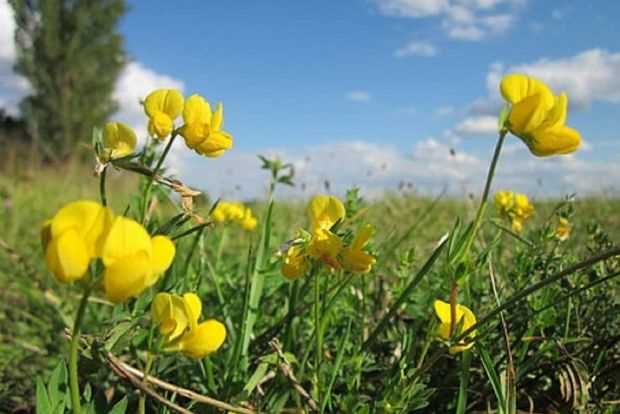
By selecting a location that provides sufficient sunlight and preparing the soil to meet their needs, you can create an ideal environment for birdsfoot plants to thrive. Remember to monitor the moisture levels and provide regular care to ensure healthy growth and vibrant blooms.
Preparing the Soil: Steps to Ensure Optimal Growth
- Choose the right location for your birdsfoot plants. They thrive in well-draining soil and prefer full sun to partial shade.
- Clear any existing vegetation or weeds from the area where you plan to plant your birdsfoot. This will help prevent competition for nutrients and sunlight.
- Loosen the soil using a garden fork or tiller. Birdsfoot plants have deep roots, so it’s important to create a loose and friable soil structure that allows for root penetration.
- Remove any large rocks, debris, or roots that could impede root development and growth.
- Amend the soil with organic matter, such as compost or well-rotted manure, to improve its fertility and structure. Work the organic matter into the soil to a depth of at least 6 inches.
- Test the soil pH. Birdsfoot plants prefer a slightly acidic to neutral pH range of 6.0 to 7.0. If your soil is outside of this range, you may need to make adjustments by adding lime or sulfur.
- Apply a balanced fertilizer according to the recommendations of a soil test or a general-purpose fertilizer with equal proportions of nitrogen, phosphorus, and potassium.
- Use a rake to smooth the soil surface and remove any remaining clumps or stones.
- Water the soil thoroughly before planting to ensure proper hydration.
By following these steps, you can ensure that your birdsfoot plants have the best possible start and are positioned for optimal growth and development.
Seeding and Planting Birdsfoot: Techniques and Timing
Seeding and planting birdsfoot can be done through various techniques, depending on the specific species and varieties you are working with. Here are some tips to help you successfully establish birdsfoot in your garden or landscape:
1. Direct Seeding
Direct seeding is a common method for establishing birdsfoot. It involves sowing the seeds directly into the garden or landscape. Here’s how to do it:
- Prepare the soil by removing any weeds or debris.
- Loosen the top few inches of soil using a garden fork or tiller.
- Spread the birdsfoot seeds evenly over the prepared soil.
- Rake the seeds lightly to ensure good seed-to-soil contact.
- Water the area gently to moisten the soil.
2. Transplanting Seedlings
If you have started birdsfoot from seeds indoors or purchased seedlings, you can transplant them into your garden or landscape. Here’s how to do it:
- Choose a location with well-drained soil and partial shade.
- Dig a hole twice as wide and deep as the seedling’s root ball.
- Carefully remove the seedling from its container, being mindful of the roots.
- Place the root ball in the hole and backfill with soil.
- Gently firm the soil around the plant.
- Water the seedling thoroughly to help it establish.
Timing for Seeding and Planting Birdsfoot
Timing is crucial when it comes to seeding and planting birdsfoot. Here are some general guidelines:
| Species/Variety | Best Time to Seed/Plant |
|---|---|
| Iberis sempervirens (Evergreen candytuft) | Spring or fall |
| Lotus tetragonolobus (Asparagus pea) | Early spring |
| Lotus corniculatus (Birdsfoot trefoil) | Spring or fall |
These timing suggestions may vary depending on your specific climate and growing conditions. It’s always a good idea to consult local gardening resources or experts for more accurate timing information.
By following these seeding and planting techniques, as well as choosing the appropriate timing for your birdsfoot species and varieties, you can enjoy a beautiful and thriving garden or landscape filled with these charming plants.
Maintaining Birdsfoot: Watering, Fertilizing, and Controlling Pests
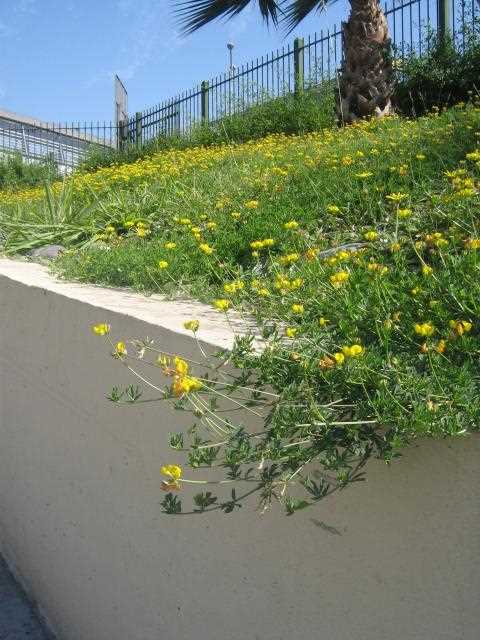
Proper maintenance is essential to keep birdsfoot plants healthy and thriving. This section provides guidelines on watering, fertilizing, and controlling pests to ensure optimal growth and productivity.
Watering
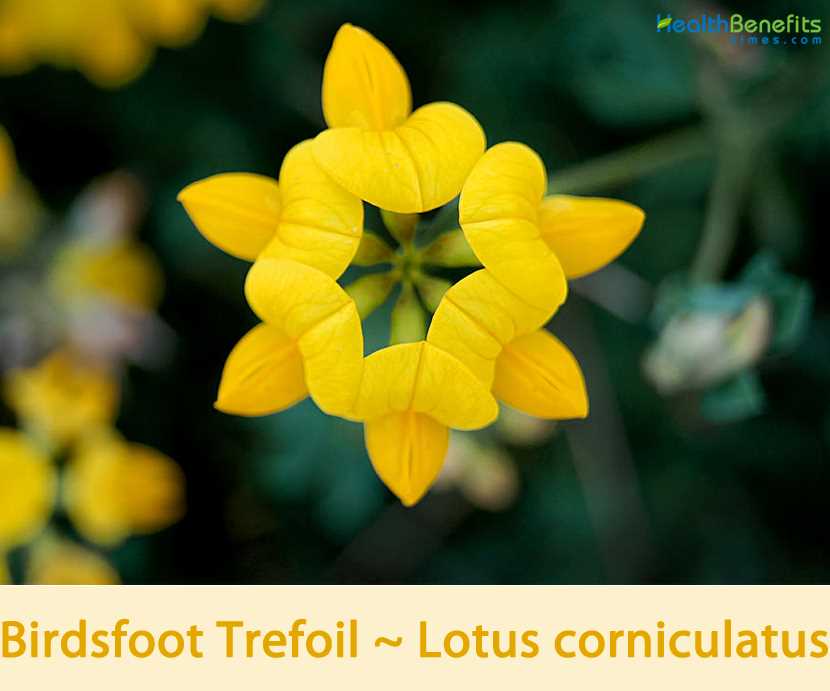
- Water birdsfoot plants regularly during dry periods, especially in the first few weeks after planting. Aim to keep the soil consistently moist but not saturated.
- Avoid overwatering, as this can lead to root rot and other diseases. Check the soil moisture level before watering to prevent waterlogging.
- Consider using a drip irrigation system or soaker hoses to deliver water directly to the base of the plants and minimize evaporation.
- Adjust the frequency and amount of watering based on the weather conditions and the specific needs of the plants. Pay attention to any wilting or yellowing leaves, as these may indicate inadequate watering.
Fertilizing
- Apply a balanced slow-release fertilizer to birdsfoot plants in the spring, just before new growth begins. Follow the manufacturer’s instructions for the appropriate dosage.
- Consider using an organic fertilizer to promote healthy growth and minimize the risk of chemical buildup in the soil.
- Avoid excessive use of nitrogen-based fertilizers, as this can lead to lush foliage growth at the expense of flower and fruit production.
- Monitor the plants for any signs of nutrient deficiencies, such as yellowing leaves or stunted growth, and adjust the fertilizer application accordingly.
Controlling Pests
While birdsfoot plants are generally resistant to pests, some common garden pests can still pose a threat. Here are some tips for controlling pests:
- Inspect the plants regularly for any signs of pest infestation, such as chewed leaves, wilting, or visible insects.
- Handpick and remove any insects found on the plants, such as aphids or caterpillars. Dispose of them appropriately to prevent further spread.
- Consider using natural pest control methods, such as insecticidal soaps or neem oil, to deter and eliminate pests.
- Encourage natural predators, such as ladybugs or lacewings, to help keep pests in check.
- Practice good garden hygiene by removing fallen leaves and debris, as these can harbor pests and diseases.
- If pest infestation becomes severe, consult a local gardening expert or extension service for further guidance on appropriate pest control measures.
Propagating Birdsfoot: Methods for Expanding Your Garden
Once you have successfully grown birdsfoot in your garden, you may want to expand your collection or share plants with friends and family. Propagating birdsfoot can be done through several methods, including seeds, cuttings, and division.
Seed Propagation
One of the easiest ways to propagate birdsfoot is through seeds. Here is a step-by-step guide on how to propagate birdsfoot using seeds:
- Collect mature seeds from the birdsfoot plants. Seeds are typically ready for harvest when they turn brown and become dry.
- Remove the seeds from the seed heads and place them in a well-ventilated area to dry completely.
- Prepare a seed tray or potting containers with well-draining soil mix.
- Sow the seeds on the soil surface, gently pressing them into the soil without covering them completely.
- Water the seeds lightly to keep the soil moist, but not saturated.
- Place the seed tray or containers in a warm and sunny location, ideally with a temperature of around 70 degrees Fahrenheit (21 degrees Celsius).
- Keep the soil consistently moist until the seeds germinate, which can take anywhere from 10 to 21 days.
- Once the seedlings have grown a few inches tall, carefully transplant them into individual pots or directly into the garden.
Cutting Propagation
Another way to propagate birdsfoot is through cuttings. Here’s how you can do it:
- Select a healthy and mature birdsfoot plant from your garden.
- Using a clean and sharp pair of pruning shears, take cuttings from the plant, making sure each cutting is about 4-6 inches long.
- Remove the lower leaves from the cuttings, leaving only a few leaves at the top.
- Dip the bottom end of the cutting in rooting hormone powder to promote root growth.
- Plant the cuttings in a well-draining potting mix or directly in the garden, making sure to keep the soil moist.
- Place the cuttings in a warm and sunny location, but protect them from direct sunlight.
- Mist the cuttings regularly to keep them hydrated and help them establish roots.
- After a few weeks, the cuttings should develop roots. At this point, you can transplant them to their permanent location in the garden or individual pots.
Division
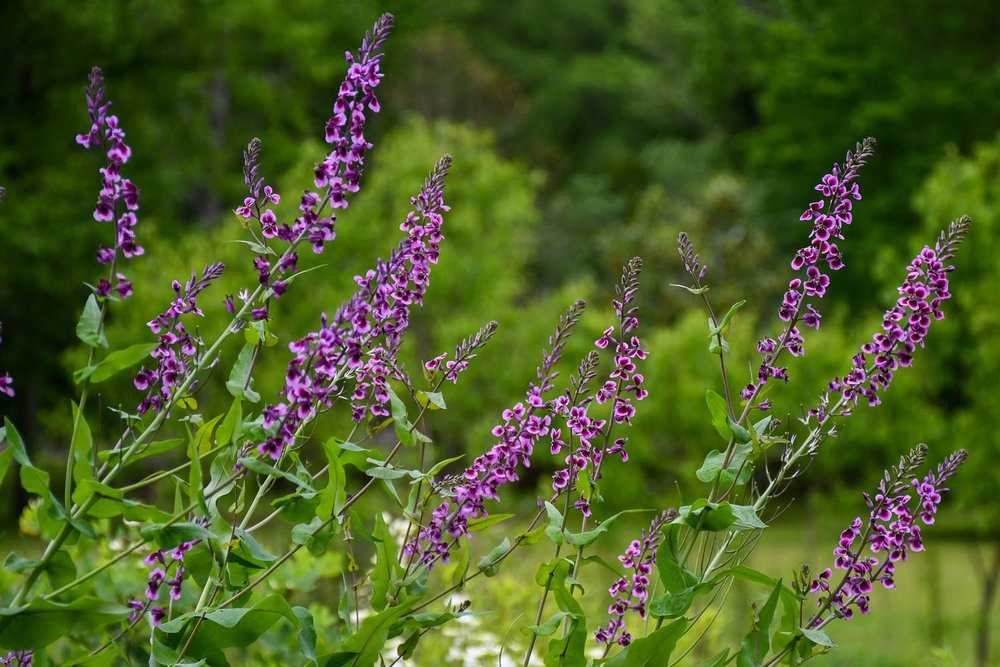
Division is another effective method for propagating birdsfoot. Here’s what you need to do:
- Carefully dig up a healthy birdsfoot plant from your garden, making sure to preserve the root ball.
- Using a sharp and clean gardening tool, divide the root ball into multiple sections. Each section should have its own set of stems and roots.
- Plant each divided section in its desired location in the garden or in individual pots.
- Water the newly planted divisions thoroughly and keep the soil consistently moist until they establish roots.
- Monitor the divisions closely for signs of growth and adjust watering accordingly.
By using these propagation methods, you can easily expand your birdsfoot collection and create a beautiful garden filled with these lovely plants.
Discovering Different Species: Exploring the Diversity of Birdsfoot
The birdsfoot (Lotus corniculatus) is a beautiful and versatile plant that belongs to the legume family. While there are several species of birdsfoot, each one has its own unique characteristics and traits. Exploring the diversity of birdsfoot species can be a fascinating and rewarding experience for gardeners and plant enthusiasts.
1. Birdsfoot Species
There are several species of birdsfoot, including:
- Lotus corniculatus: Also known as common birdsfoot trefoil, this species is native to Europe and Asia.
- Lotus berthelotii: This species is commonly known as Canary Island birdsfoot and is native to the Canary Islands.
- Lotus maculatus: Also known as big birdsfoot trefoil, this species is native to North America.
2. Characteristics and Traits
Each species of birdsfoot has its own unique characteristics and traits. Some species have long, trailing stems with small yellow flowers, while others have red or pink flowers. The leaves vary in size and shape, with some species having small, oval-shaped leaves and others having large, lobed leaves.
Birdsfoot plants are known for their ability to fix nitrogen in the soil, which makes them beneficial for improving soil health and fertility. These plants also attract pollinators such as bees and butterflies, making them excellent additions to pollinator gardens.
3. Cultivating Different Species
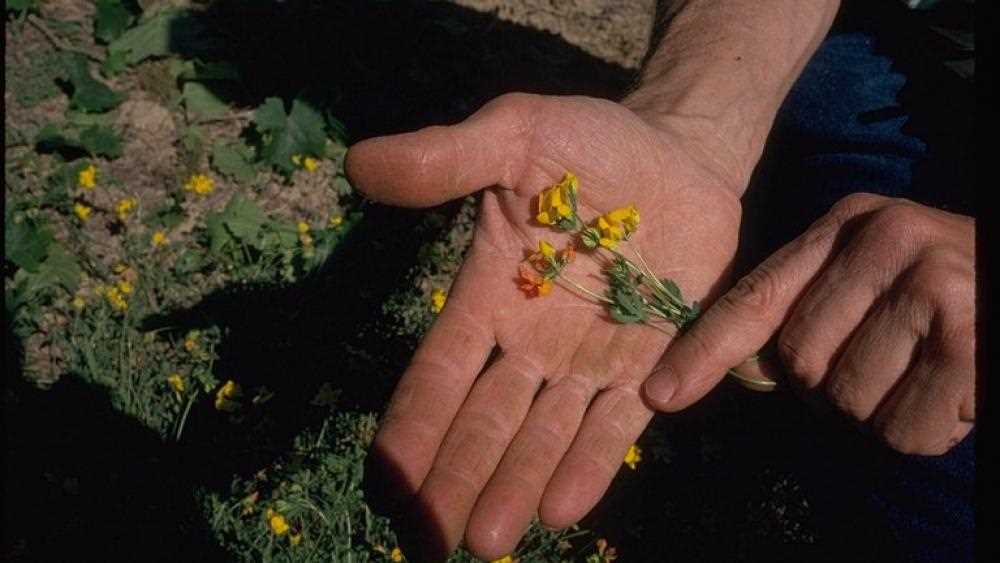
Cultivating different species of birdsfoot involves providing the right growing conditions and care. Each species has its own specific requirements for light, soil type, and water.
For example, common birdsfoot trefoil thrives in full sun to partial shade and well-drained soil, while big birdsfoot trefoil prefers full sun and tolerates a wide range of soil types. It’s important to research the specific needs of each species before planting and provide the appropriate conditions to ensure their success.
4. Using Different Species in the Garden
The diverse characteristics and traits of different birdsfoot species make them suitable for various uses in the garden. Some species are excellent groundcovers, providing a carpet of colorful flowers and foliage. Others can be used as ornamental plants in borders or containers.
In addition to their aesthetic value, birdsfoot species also have ecological benefits. They can be used for erosion control on slopes and in rain gardens to absorb excess water. They also provide habitat and food for wildlife.
5. Discovering Different Varieties
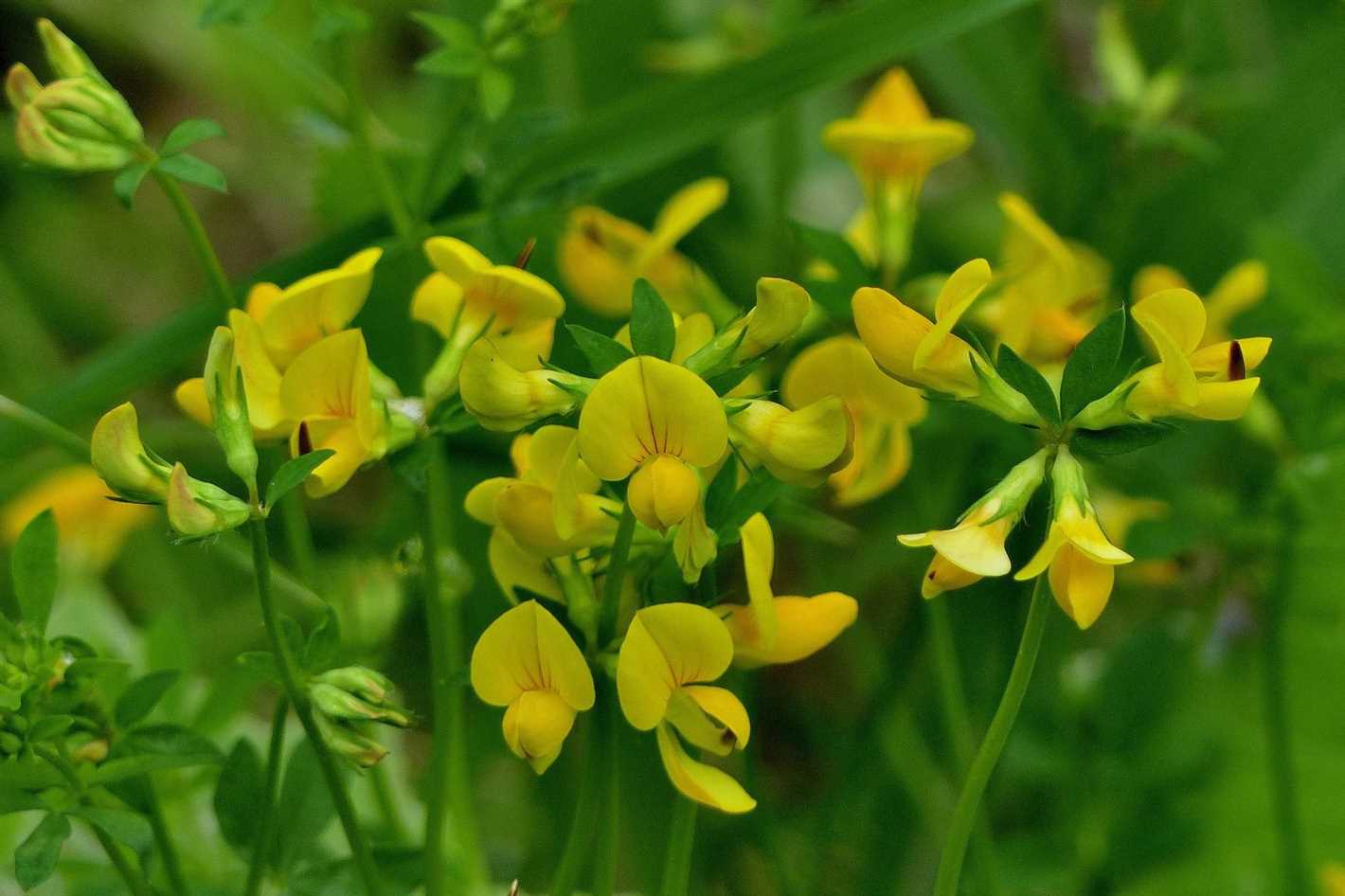
Within each species, there are also different varieties and cultivars available. These variations can have different flower colors, leaf shapes, and growth habits. Exploring the different varieties of birdsfoot can add even more diversity and interest to your garden.
Some popular varieties include ‘Flambeau’ with its bright red flowers, ‘Pleniflorus’ with its double flowers, and ‘Goldmarie’ with its golden yellow foliage.
| Variety | Flower Color | Leaf Shape | Growth Habit |
|---|---|---|---|
| ‘Flambeau’ | Red | Oval | Trailing |
| ‘Pleniflorus’ | Double | Lobed | Upright |
| ‘Goldmarie’ | Yellow | Oval | Trailing |
Exploring the diversity of birdsfoot species and varieties opens up a world of possibilities for gardeners. Whether you want to attract pollinators, improve soil health, or simply enjoy the beauty of these plants, there is a birdsfoot species or variety that is perfect for your garden.
Varieties: Uncovering the Beauty and Unique Characteristics
One of the most fascinating aspects of birdsfoot is the wide range of varieties available. Each variety possesses its own unique characteristics, ranging from flower colors to leaf shapes, allowing for a diverse and stunning display in any garden or landscape.
Flower Varieties
When it comes to flower varieties, birdsfoot offers a beautiful array of colors. The most common varieties include:
- Yellow Birdsfoot: This variety features vibrant yellow flowers that add a cheerful touch to any garden.
- Peach Birdsfoot: With delicate peach-colored petals, this variety adds a subtle and elegant charm to floral arrangements.
- Purple Birdsfoot: The purple flowers of this variety create a striking contrast when planted alongside other colorful blooms.
- White Birdsfoot: This variety’s pure white flowers bring a sense of purity and sophistication to any garden setting.
Leaf Varieties
In addition to the diverse flower colors, birdsfoot also offers a variety of leaf shapes, adding an extra dimension of beauty to this plant. Some notable leaf varieties include:
- Feathery Leaves: This variety has delicate, feathery leaves that give it an ethereal and wispy appearance.
- Sword-shaped Leaves: With long and slender leaves, this variety adds a touch of elegance to any garden.
- Lacy Leaves: The lacy leaves of this variety create a delicate and intricate pattern, adding a sense of complexity to the overall plant.
- Heart-shaped Leaves: This variety’s leaves resemble the shape of a heart, adding a touch of romance and sweetness to the garden.
Unique Characteristics
Aside from the flower colors and leaf shapes, birdsfoot also possesses unique characteristics that set it apart from other plants. Some of these characteristics include:
| Characteristic | Description |
|---|---|
| Drought Tolerance | Birdsfoot is known for its ability to withstand periods of drought, making it a resilient and low-maintenance plant. |
| Attracts Pollinators | The vibrant flowers of birdsfoot are known to attract various pollinators, such as bees and butterflies, helping to support local ecosystems. |
| Nitrogen Fixation | One of the unique traits of birdsfoot is its ability to fix nitrogen in the soil, enriching it and benefiting surrounding plants. |
| Ground Cover | Many varieties of birdsfoot have a spreading habit, making them excellent choices for ground cover and erosion control. |
With such a diverse range of varieties, each showcasing its own unique characteristics and beauty, birdsfoot is truly a captivating plant to grow and explore.
Questions and Answers:
What is birdsfoot?
Birdsfoot is a type of plant, also known as Lotus corniculatus, that belongs to the legume family.
How can I cultivate birdsfoot in my garden?
To cultivate birdsfoot in your garden, you can start by selecting a sunny location with well-drained soil. You should prepare the soil by removing any weeds and adding organic matter. Sow the seeds directly into the soil and lightly cover them. Water the seeds regularly until they germinate, and then water as needed. Birdsfoot is a hardy plant that requires minimal care once established.
What are the different species and varieties of birdsfoot?
There are several different species and varieties of birdsfoot, including Lotus corniculatus, Lotus tenuis, and Lotus subbiflorus. Each species and variety has its own unique characteristics and growing requirements.
How can I propagate birdsfoot?
Birdsfoot can be propagated through seeds or by dividing established plants. To propagate through seeds, collect the mature seed pods and allow them to dry. Once dry, break open the pods and collect the seeds. Sow the seeds in a prepared bed and water regularly. To propagate by dividing plants, carefully dig up an established plant and separate the roots into smaller sections. Replant the sections in a prepared bed and water regularly until they establish.
What are some tips for growing birdsfoot?
Some tips for growing birdsfoot include selecting a suitable location with well-drained soil and plenty of sunlight, preparing the soil before sowing the seeds, watering regularly until the plants establish, and providing minimal care once the plants are established. It is also important to avoid overwatering or over-fertilizing birdsfoot, as it can lead to poor growth.
Can birdsfoot be used in landscaping?
Yes, birdsfoot can be used in landscaping. It is a versatile plant that can be used in borders, meadows, and as a ground cover. Birdsfoot attracts pollinators and provides nitrogen to the soil, making it a beneficial addition to any landscape.







